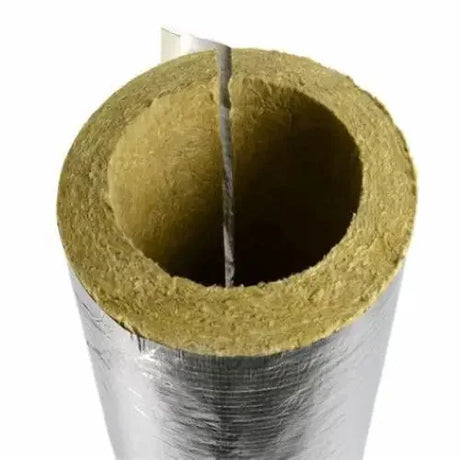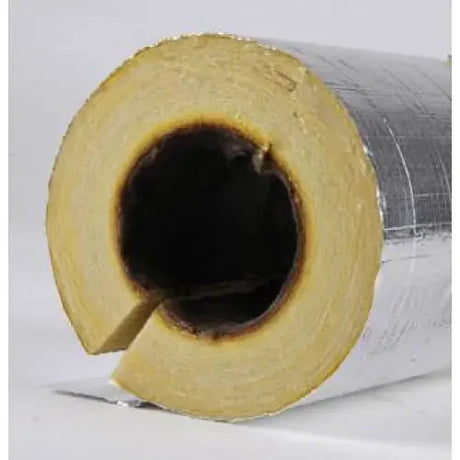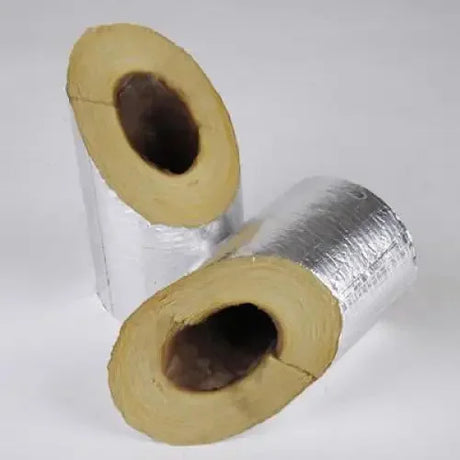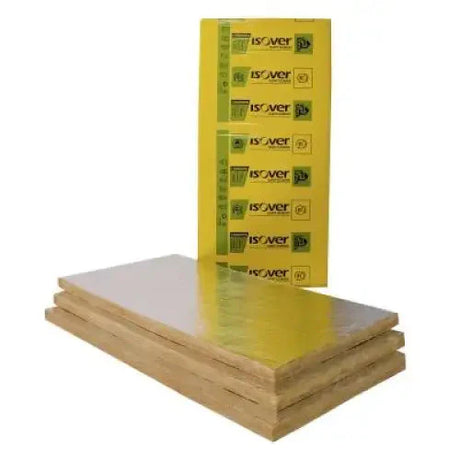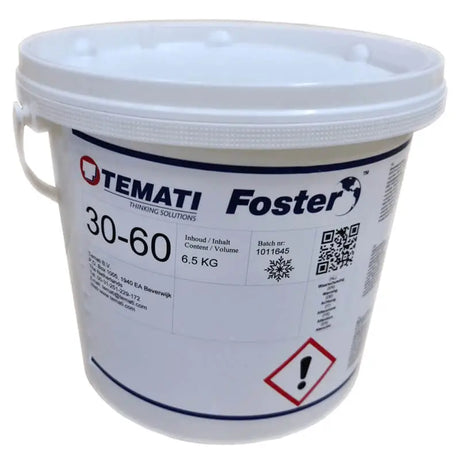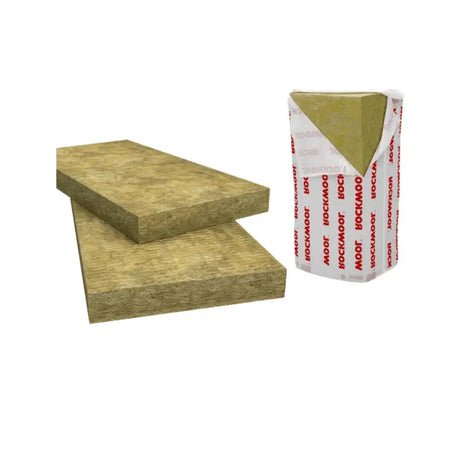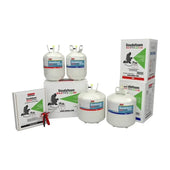Radiant barriers and reflective insulation are two different insulation materials that are often confused. While both help improve energy efficiency, they work in different ways. This article will explain the key differences between radiant barriers and reflective insulation, their purposes, how they work, and when to use each.
What is a Radiant Barrier?
A radiant barrier is a thin sheet or foil layer that reflects radiant heat rather than absorbing it. It is placed in buildings to reduce heat transfer between surfaces.
Radiant barriers are commonly made of aluminum but can also be made of other reflective materials. They usually have a shiny side that faces an open air space where it can reflect radiant heat.
How Does a Radiant Barrier Work?
Radiant barriers work by reflecting radiant heat rather than absorbing it. Radiant heat travels in a straight line and can be reflected away.
On hot sunny days, radiant heat from the sun hits the roof and ceiling. Some of this heat is absorbed and transferred into the attic space. The rest is radiated down to the attic floor.
A radiant barrier placed on the underside of the roof rafters or on top of the attic floor reflects this radiant heat back up into the attic rather than letting it transfer down into the rooms below. This reduces heat gain and cooling costs.
[Radiant Heat Transfer Diagram]
Radiant barriers are effective because they have a highly reflective surface (usually 97% or more reflectivity). Common materials for radiant barriers include aluminum foil, aluminum-coated paper, or aluminum-coated plastic films.
What is Reflective Insulation?
Reflective insulation, also known as reflectix, is a type of insulation made up of layers of aluminum foil with various spacers between them. The multiple layers help reflect radiant heat and reduce conductive heat flow.
Reflective insulation is commonly used for duct insulation, wall insulation, underfloor insulation, and more. It comes in rolls or sheets of various widths with an R-value around R-5 to R-10.
How Does Reflective Insulation Work?
Reflective insulation works by slowing conductive, convective, and radiant heat transfer. The reflective layers reflect radiant heat while the air spaces resist conductive and convective heat flow.
The alternating layers of reflective material and air spaces act as a thermal barrier. As heat tries to conduct through the material, it hits a reflective layer and is reflected back rather than passing through the insulation.
This dramatically slows the rate of heat transfer and improves the insulation's effectiveness compared to just having a solid sheet of insulation. The more layers and air spaces, the higher the R-value.
Key Differences Between Radiant Barriers and Reflective Insulation
While both radiant barriers and reflective insulation involve reflective foils or metallic coatings, there are some key differences:
- Purpose: The main purpose of a radiant barrier is to block radiant heat transfer. Reflective insulation blocks radiant, conductive, and convective heat transfer.
- Location: Radiant barriers are normally placed on roofs or attic floors. Reflective insulation can be used anywhere insulation is needed - walls, ducts, floors, etc.
- Composition: Radiant barriers are usually a single sheet of reflective material. Reflective insulation has multiple layers separated by spacers.
- Heat transfer types: Radiant barriers focus on reflecting radiant heat. Reflective insulation blocks radiant, conductive, and convective heat flow.
- Standalone insulation: Radiant barriers on their own have a low R-value and are not sufficient as full thermal insulation. Reflective insulation can be used as a standalone insulation material.
- Installation: Radiant barriers are installed facing an open air space. Reflective insulation can be sandwiched between wall studs, wrapped around ducts, or placed against any surface needing insulation.
- Building codes: Building codes allow different uses for radiant barriers vs. reflective insulation. Reflective insulation has a defined R-value; radiant barriers depend on application.
Radiant Barrier Materials
Here are some of the most common materials used for radiant barriers:
- Aluminum foil: Aluminum foil is the most common radiant barrier material. It has up to a 97% reflectivity.
- Aluminum-coated plastic films: Plastic films like polyethylene terephthalate (PET) coated with aluminum provide high reflectivity with durability and strength.
- Aluminum-coated paper: Paper or cardboard coated with thin aluminum foil can also be an effective and economical radiant barrier.
- Foil-faced plywood or OSB: Plywood and OSB (oriented strand board) can have a foil facing on one side to create a radiant barrier. The foil is bonded to the wood surface.
- Foil-faced insulation: Foil-faced insulation products have aluminum foil on one side. The foil serves as the radiant barrier while the insulation provides an R-value.
When choosing a radiant barrier, aluminum foils with over 97% emissivity (reflectiveness) are recommended.
Reflective Insulation Materials
Reflective insulation is typically made up of the following materials:
- Aluminum foil: Thin aluminum foil sheets provide the reflective, radiant heat blocking layers. High reflectivity aluminum foils are ideal.
- Spacers: The air spaces between foil layers are created using plastic, fiberglass, or cardboard spacers that separate and hold the sheets apart from each other.
- Backing material: Reflective insulation may have kraft paper, plastic film, or other backings to protect the foil and provide structural rigidity.
- Adhesives: Foil layers are sometimes bonded to backings using adhesives like polyethylene film or fiber reinforced plastic.
The more layers of aluminum foil and air spaces in reflective insulation, the higher the R-value it provides. Adding more layers can increase thermal resistance.
Where are Radiant Barriers Used?
Here are some of the most common uses for radiant barriers:
- Attics - installed under the roofline rafters or on top of attic floors
- Wrapped around ducts and pipes in attics
- Behind wall radiators and convectors
- Inside wall cavities by placing foil-faced insulation or sheathing in the wall
- Interior window reflectors and exterior window awnings
- Wrapped around hot water heaters and tanks
Radiant barriers work best when there is an adjoining air space where the foil can reflect heat back rather than absorbing it. They also need to face an open area or adjoining cavity - they will not work if both sides are touching other surfaces.
Where is Reflective Insulation Used?
Reflective insulation can be used anywhere that standard insulation would be used, including:
- Attics - floor, walls, roof
- Exterior building walls
- Foundation and basement walls
- Wrapped around ductwork
- Below floors
- Within floor and ceiling joist cavities
- Behind radiators and heating appliances
- Under siding and exterior cladding
- Inside HVAC equipment
- Shipping containers, trailers, and sunrooms
It provides thermal resistance wherever it is installed. The reflective layers slow down all forms of heat transfer through the material.
Radiant Barrier R-Value
Radiant barriers on their own have a very low R-value, typically around R-2 or less. They are not meant to insulate or provide thermal resistance like traditional insulation materials.
Instead, they create a highly reflective surface that blocks radiant heat transfer. This can reduce heat flow between surfaces by up to 97% depending on the material.
However, when combined with air spaces and standard insulation, they can significantly improve the overall R-value of the total assembly and reduce heat flow.
Reflective Insulation R-Value
Reflective insulation is tested and rated using R-values based on the number of foil layers and spacing. Typical R-values range from:
- 2-layer foil - R5
- 3-layer foil - R10
- 5-layer foil - R15
- 10-layer foil - R30
The more layers and air spaces, the higher the reflective insulation's R-value. Multi-layer insulation with enclosed air spaces provides better insulation than just foil by itself.
Can They Be Used Together?
Yes, radiant barriers and reflective insulation can be used together to boost energy efficiency.
Some common ways they are combined include:
- Using both in attic spaces by installing reflective insulation on the attic floor and a radiant barrier under the roof rafters.
- Combining foil-faced insulation or sheathing which has a reflective layer on one side with additional reflective insulation in walls and ceilings.
- Installing duct wrap or duct board insulation with an exterior radiant barrier layer for HVAC ducts.
- Lining crawl spaces or basement ceilings with reflective insulation and radiant barriers to block ground heat transfer.
When layered together properly, they can provide an R-value and block radiant, conductive, and convective heat flow. This provides better insulation performance than using either product alone.
Radiant Barrier vs Reflective Insulation - Which is Better?
There is no definitive answer on whether radiant barriers or reflective insulation are "better" - they each have advantages in certain applications. Some key points:
- For just attics/roofs, radiant barriers often provide better cost-effectiveness and easier installation.
- For full thermal insulation, reflective products are needed rather than just a single reflective layer.
- Reflective insulation works well in confined wall and ceiling cavities where radiant barriers may have less benefit.
- Radiant barriers are ideal for ducts and HVAC equipment when an air gap is maintained around the foil.
- Both options can improve building energy efficiency in hot climates when properly installed.
In many cases, a combination of both radiant barrier and reflective insulation products may provide the optimal heat flow reduction. An analysis of each building, climate, and application need is recommended to determine which is the best solution. Consulting with qualified insulation contractors is advised.
Pros and Cons of Radiant Barriers
Pros:
- Low cost and easy DIY installation
- Effective at reducing summer cooling costs
- Reflect up to 97% of radiant heat
- Work well in hot climates with high cooling loads
Cons:
- Provide no insulation value or R-value on their own
- Must have air space to reflect heat - do not work between solid layers
- Minimal effect in heating-dominated climates
- Can promote moisture issues if improperly installed
- Reflect only radiant heat, not conductive or convective heat flow
Pros and Cons of Reflective Insulation
Pros:
- Provides a thermal resistance R-value and insulation value
- Works for radiant, conductive, and convective heat transfer
- Usable in confined spaces like wall stud cavities
- Can be used alone or with other insulation
Cons:
- Typically higher material cost than radiant barriers
- Needs multiple layers with air spaces to be effective
- Not ideal for open attic spaces
- Installation may be more complex than radiant barriers
- R-value decreases if compressed or making contact with surfaces
Conclusion
To summarize, radiant barriers and reflective insulation both provide energy efficiency benefits through their use of reflective foil surfaces to block radiant heat transfer. However, key differences exist between these two products in terms of structure, installation, applications, and effectiveness.
Radiant barriers are single sheets placed facing air spaces to reflect solar radiation and heat. Reflective insulation uses multiple layers and air spaces to create a thermal barrier that resists conductive, convective, and radiant heat flow.
Understanding these differences allows builders and homeowners to select the right solution for their specific insulation needs and climate conditions. With proper installation, both can be valuable tools for improving building energy performance.


